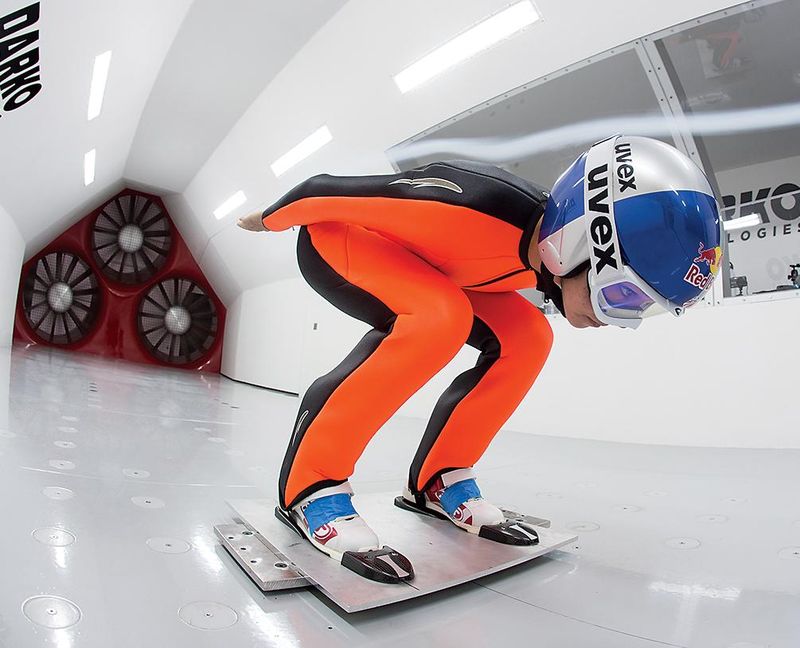Past & Future
History of Ski Jumping
- In 1808 Ole Rye jumped 9.5 meters in Norway. This is known
as birth of modern day ski jumping. 58 years later Sondre
Norheim won the worlds first Ski Jumping competition. In
1936 Austrian Sepp Bradl was the first ever person to jump
over 100 meters, jumping 101m.

- In the 50s, jumpers started holding their arms behind
them, meaning that they could lean farther forward into the
jump.
In 1985 Jan Bokloev was the first person to jump with his skis in a V, at first this technique was ridiculed but by the 1992 Olympics this was the technique to use.

Current Advancements
Since the total length of a jump is only ~10 seconds and most training sessions for jumpers only include about 4-5 jumps. They have very little time to actually practice and make changes in their form. Recently jumpers have started to bring their skis inside to wind tunnels, where they will have the time to make changes to their form. With the use of smoke they can see exactly how the air is traveling over their body to minimize drag and maximize lift. The jumpers are able to feel how even a slight change of arm position in their in-run tuck can largely affect the drag.
